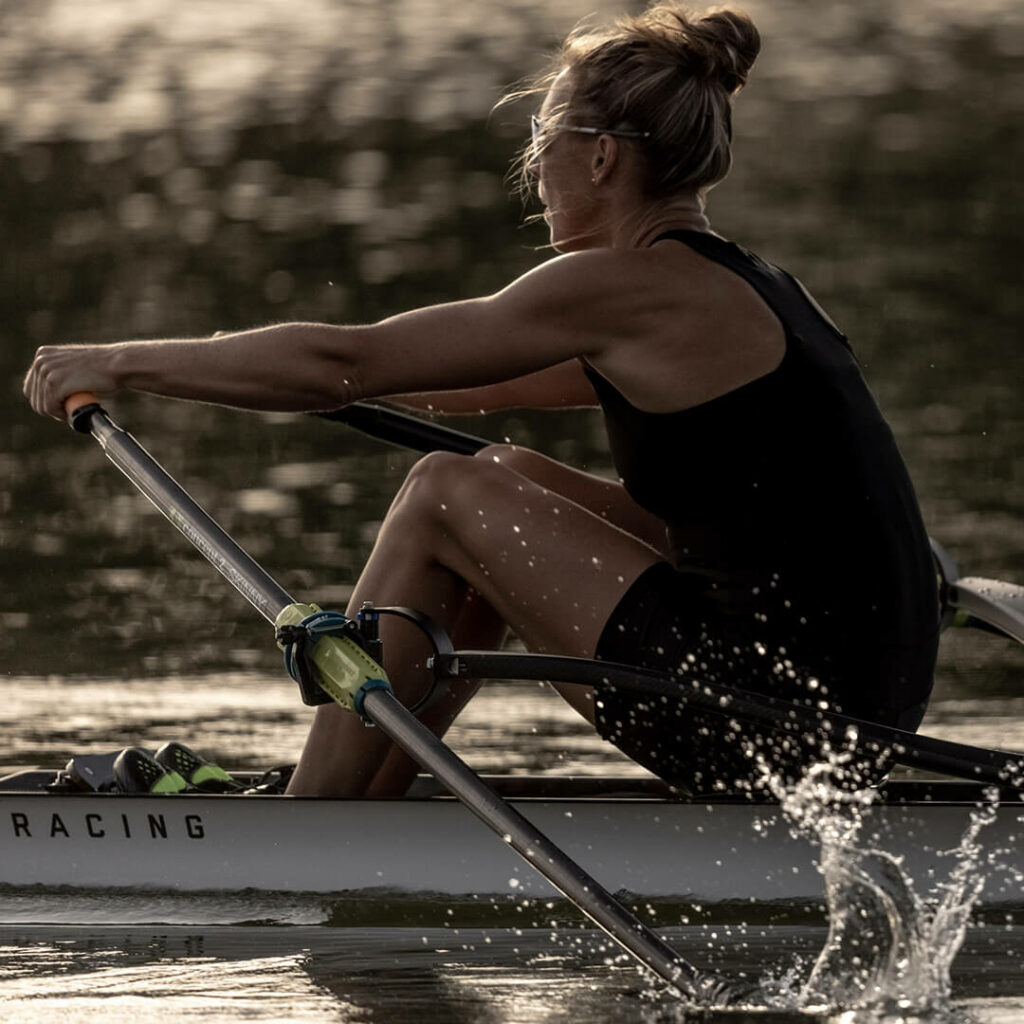In our last Rowing New Zealand article and blog piece, we took a basic look at pitch and what it actually is. Theory is great, but we’re all about putting those good theories into practice, so in this blog we are going to run through a nice simple way to set up and check your pitch.
First things first – grab that pin
Before you do absolutely anything with your pitch, you’re going to need to check what your pin is doing. Secure your boat (make sure it can’t move), and make sure it is absolutely dead level both side to side and bow to stern. Do this by grabbing a level and lifting or dropping the bow, stern or side which needs to change to get that little bubble in the centre of the level. Once you’ve found level…make sure the boat can’t move from that position! Remove the gate so just the pin is exposed and get yourself a smaller level, running it vertically up the pin. You’ll want to check two spots – is the pin dead straight (zero degrees) relative to the bow/stern of the boat, and what is the pitch of the pin relative to the centre of the boat. If ALL the pins on your boat are at zero relative to the bow/stern, and THE SAME (between 0 and 1 degree) side to side relative to the centre of the boat…then you are pretty good to move onto the next step. If not…you’re going to have to manipulate that pin! Always hesitate before doing this, as you’ll often find a pin can be stronger than the rigger it is attached to, so heaving around to change the angle of a pin may damage the welds on your rigger. Do it carefully…and only if the juice is worth the squeeze. We’d suggest finding an experienced coach or rower around the club and ask them to assist you – as it can be a brutal job and you don’t want to damage the boat.
Hooray – the pin is perfect!
Once you’ve got the pin exactly where you want it, you can move onto setting up the pitch of the actual gate. This is a much…much simpler task. Grab yourself a pitch meter (or if you are old school and want to be super accurate a plumb bob…again…find an older rower or coach to ask what we’re talking about there), place it against the face of the gate where your blade rests and take a degree reading. Make sure the gate is either facing parallel to the boat, or directly away from it, and take each measurement you make on each gate at the exact same spot (particularly if you’ve put pitch into the actual pin). You’re probably looking for about 4 degrees pitch….if it’s lower than 3 degrees, you’ll want to add more. To do that, remove the gate and check the little (usually blue) inserts in the gate itself. You’ll see they have numbers (7 and 1, 6 and 2, 5 and 3, 4 and 4). The difference between the numbers is the important part (7-1 = 6, 5-3 = 2), to increase your pitch, go for a difference in numbers that is higher than what you’ve currently got in the gate. And remember – this is IMPORTANT – the top insert needs to be put in the opposite way to the bottom insert (so if you have 7-1’s, you’ll want to make sure the 1 is closest to the top of the pin at the top, and the 7 is closest to the pin at the bottom). This subtle difference in sizing at the top and the bottom of the pin either pushes the face of the gate forward, or back, giving more or less pitch.
Check it and check it again
It’s really easy to get these small changes wrong, so just be sure to check and double check every gate – with it both parallel to the boat and facing away from it. You can of course rig each seat slightly differently, but it’s always a good bet to at least start with everyone’s pitch the same.
So there you have it. Pitch…simplified…sort of! Definitely ask around for lessons from people at the club, and have a think how pitch might be affecting your stroke.


